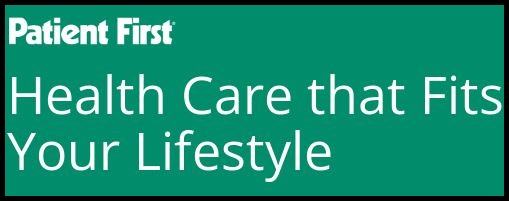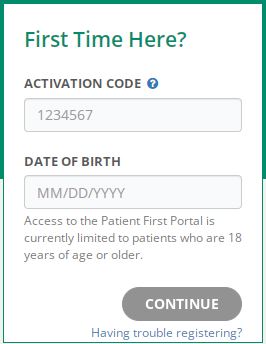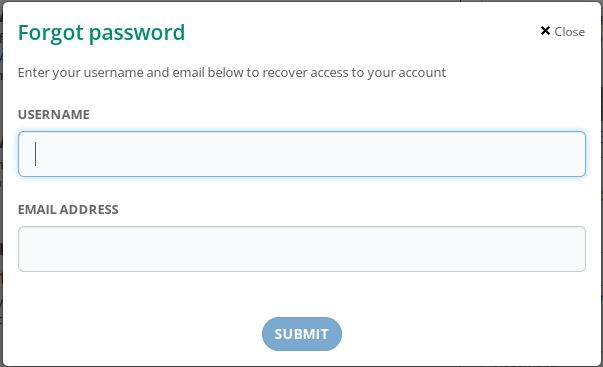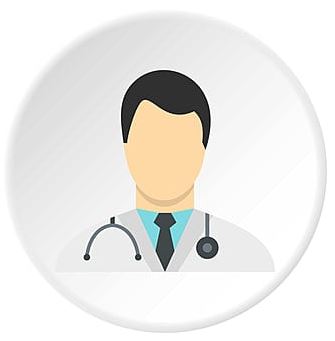The Patient First Portal is an online platform designed to streamline healthcare interactions. It serves as a secure gateway to various healthcare services, allowing patients to connect with their medical providers, review test results, schedule appointments, and manage their health records, all from the comfort of their homes.
Even if you don’t have an account you can see step by step guide for creating a Patient First Portal Login Account and Resetting the Patient First password as well.

How To Patient First Portal Login
- Go to Patient First Portal’s Official Page on ∗ the Official Website

- Enter Your Username and Password as You can see in the screenshot.
- Enter the password created for the Patient First Portal and press the login button.
- Now You can Access your Portal and Check Your Records
If You don’t have an account for Patient First Portal then create a new one using the link given below.
How To Create a Patient First Portal Account
- Go to the ∗ Official Website

- Click on Sign Up/Register/ Create Account
- Enter Required Details Email, Phone Number, and whatever is required.
After filling You all the details that are required and later you can access the portal and manage your all records on the Patient Portal.
How To Forgot Your Patient First Portal Login Password
- Go to the Patient First Portal Page at ∗ the Official Website

- Click on the Patient First Portal forgot password/reset password link given below
- Enter required details like email ID or User Name
- Check Your email for Reset Link and OTP
- Follow the next step click on the links that you received and create a new password.
Access to Medical Records
One of the most significant advantages of the Patient First Portal is its ability to provide patients with instant access to their medical records. No more waiting for phone calls or searching through paper documents; everything you need is just a few clicks away. From prescription history to lab results, it’s all there.
Appointment Management
Managing appointments has never been easier. Through the portal, patients can schedule, reschedule, or cancel appointments based on their availability and healthcare provider’s schedule. This feature helps reduce wait times and ensures that patients receive timely care.
Secure Messaging
The portal enables secure communication between patients and healthcare providers. Have a question about your treatment plan? Need to request a prescription refill? The secure messaging feature allows you to directly communicate with your healthcare team, fostering a sense of connected care.
Personalized Care Plans
With the Patient First Portal, your healthcare journey becomes highly personalized. You can access care plans tailored to your specific needs, helping you stay on top of your health goals, medications, and recommended lifestyle changes.
Health Education and Resources
Stay informed about your health through the portal’s wealth of educational resources. From articles about managing chronic conditions to healthy living tips, the Patient First Portal goes beyond just appointments, empowering you to make informed decisions.
Mobile Access
Access the portal on the go! Whether you’re traveling, at work, or simply prefer using your mobile device, the Patient First Portal is designed to be mobile-responsive, ensuring you stay connected to your healthcare no matter where you are.
Privacy and Security
Concerned about the security of your medical information? The Patient First Portal takes privacy seriously. Robust security measures are in place to safeguard your data, ensuring that only authorized individuals can access your health records.
Contact Us:
Phone Inquiries:
From Richmond: (804) 968-5700
Outside Richmond: (800) 447-8588
Fax: (804) 968-5725
Mailing Address:
Patient First
5000 Cox Road
Glen Allen, VA 23060
FAQs
How to Access the Health Portal?
- For portals for patients, the first and most important thing you’ll require is a laptop computer with an internet connection. Create a personalized user account within the software to access medical services on your own.
- Once you have logged into the portal for patients navigate to the items and links provided by the provider, and then enjoy a fresh experience. Create the portal to meet your requirements and receive notifications or reminders to stay informed on the most recent products and services.
What’s the point of the portal for patients?
- Patient portals are secure, online site that provides patients with convenient access to their personal health information anytime that has Internet connectivity. With an encrypted account and password, users can access health information including Recent appointments with a doctor. Discharge summaries
Why are some patients unable to take part in the utilization of the portal for patients?
- The main reason that patients don’t want to sign up for their portal is that they do not see benefits to it, they simply don’t want to. The portals fail to encourage the patient to participate either in a way that is in terms of intellectual value (providing sufficient information to show value) or financially.
What is the most frequent obstacle to using the portal for patients?
- For non-adopters (n=2828) The most common obstacle to patient portal adoption was the preference of patients to communicate in person (1810/2828, 64.00%) (Table 2). The second most frequent issue was that there was no need for a portal for patients (1385/2828, 48.97%).
Are patient portals simple to make use of?
- Portals give doctors an efficient and quick method to connect with patients who are chronically sick. They allow doctors to complete and precise information about patients. Portals enable patients to be in charge of their own health, ensuring they can be aware of their whole process of care.
When did portals for patients start?
- In the late 1990s and into the 2000s early users of patient portals started offering tools that facilitate patient-centered communications, usually “tethered” to their medical record systems.
What is the difference between the personal health records of patients and portals?
- Patient portals are a form that is a personal health record (PHR) that connects with an electronic health record (EHR) system. Patient portals are encrypted websites on which patients are able to access their medical records.
Are health portals secure?
- Patient portals are protected by security and privacy safeguards put in place to safeguard your personal health information.
- The patient portals are hosted over secured connections and accessible by a password-protected, encrypted login to ensure that your personal health information is protected from unauthorized access.
- Patient portals enhance the ways patients and health providers interact. They are a product with meaningful usage standards and are mandated to offer patients quick access to their healthcare. Particularly, they give the patients access to their medical records to play a more active part in their health.
- There are two types of portals for patients: standalone systems and integrated ones. The functionality of integrated patient portal software is usually a component in an EMR system an EHR system, or practice management programs. However, at their most basic level, they’re web-based applications.
- Patients can access patient portals to access laboratory results, ask a question, or update their profile and insurance companies. A few portals allow patients to book appointments and pay bills via the portal. Providers have the opportunity to boost the engagement of patients to increase loyalty, improve service, control expenses and improve processes.
Primary Benefits
Whichever platform you select the patient portal you choose to use will give your patients secured online access to their health records and help them become more engaged with your business. In addition, it can provide many benefits for health professionals as well. The benefits of this include:
Note: We gather actual Patient First Portal Information from sources such as on-site visits and phone interviews. The methods reported on this webpage derive from one or more of those sources.
» For Other Patient First Portal information Visit our website: patient-health-portal
